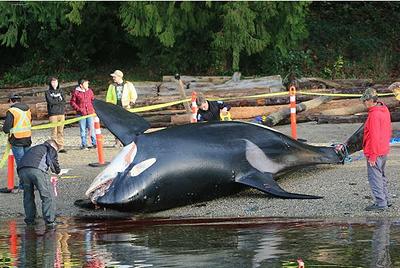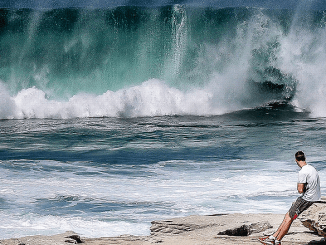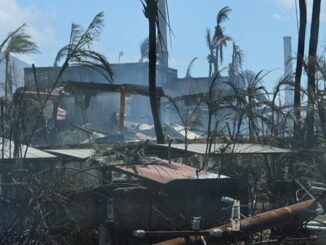
VANCOUVER, British Columbia, Canada, December 9, 2020 (ENS) – When marine predators themselves face mortal threats, researchers at the University of British Columbia studying orca deaths in Pacific Ocean waters believe that human tampering with the ocean is to blame.
Pathology reports on 52 killer whales stranded over the past decade in the northeast Pacific and Hawaii show that orcas, also called killer whales, face a variety of mortal threats. Many of these top predators died from complications brought upon them by humans – trauma from missiles, sepsis from a halibut hook, or vessel strikes. Additional causes of death include infectious disease and nutritional deficiencies.

An analysis of the pathology reports was published earlier this month in the peer-reviewed open access journal “PLOS ONE.” The findings indicate that understanding and awareness of every action that could threaten the animals is critical for managing and conserving killer whale populations and presents a baseline understanding of orca health.
The study was conducted by a team of marine mammal and orca specialists led by the British Columbia Ministry of Agriculture and coordinated through the SeaDoc Society, an Orcas Island, Washington-based program of the University of California, Davis School of Veterinary Medicine.
The lead author Dr. Stephen Raverty and coauthor Dr. John Ford, are professors at the University of British Columbia (UBC) and teach at the UBC Institution of Oceans and Fisheries at the UBC department of zoology.
A variety of whales were included in the study; some samples were from healthy, thriving whale populations, while others were from whale species that have become endangered. The whales studied came from different locations spanning the coasts of British Columbia, Washington, and Oregon.
Between 2003 and 2014, 52 whales were found beached, but only 42 percent of these whales had a determinable cause of death.
There was not one single cause of death among all the 52 whales, yet many of these whales’ deaths, no matter their age, had correlations to human activities.
Dr. Raverty said, “One of these iconic species passed away from an infection secondary to satellite tagging. Another death was due to natural causes and the other two undetermined. Half of the southern killer whale deaths identified in this study were caused by human interactions.”
These whales are not just hurt by humans overfishing and polluting the oceans, but also by lethal objects like missiles and hooks.
“The results from systematic necropsies of dead killer whales in this review is unique and will establish critical baseline information to assess future mitigation efforts,” Raverty said. “This work contributes to a better understanding of the impacts that ongoing human activities and environmental events have on killer whales.”
While its authors acknowledge that this report is an incomplete overview of orca health, it illustrates the abundance of environmental as well as human threats that researchers can study to better protect killer whales in the future.
“Nobody likes to think we’re directly harming animals,” said co-author and SeaDoc Society Director Joe Gaydos, a wildlife veterinarian in the UC Davis School of Veterinary Medicine. “But it’s important to realize that we’re not just indirectly hurting them from things like lack of salmon, vessel disturbance or legacy toxins. It’s also vessel strikes and fish hooks. That humans are directly killing killer whales across all age classes is significant; it says we can do a better job.”
— By Georgia Siedman
Copyright Environment News Service (ENS) 2020. All rights reserved.
© 2020, Environment News Service. All rights reserved. Content may be quoted only with proper attribution and a direct link to the original article. Full reproduction is prohibited.



